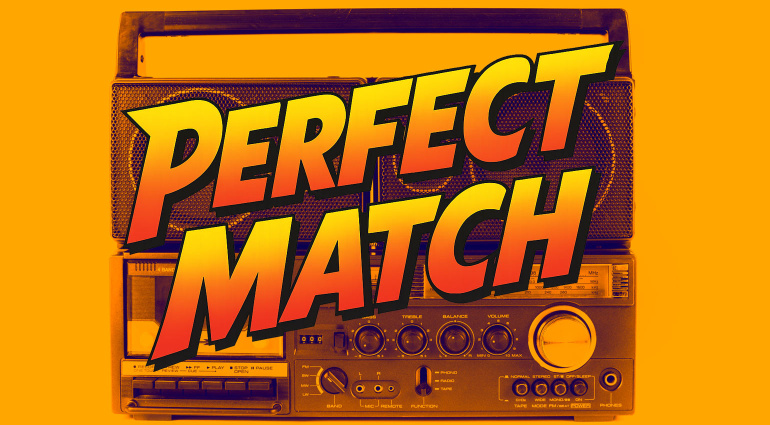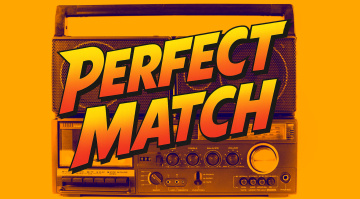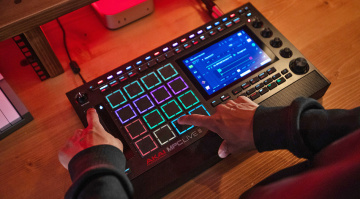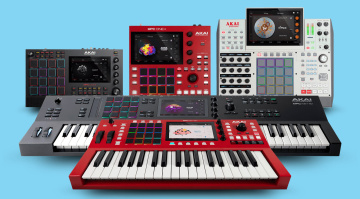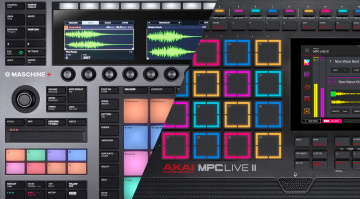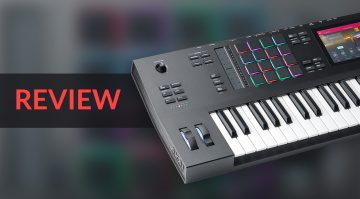Boom Bap Beats Like in the 90s: Here’s What You Need – Perfect Match!
Everything Fits Together – Inspiration for Your Next Purchase
The “comeback” of the 1990s is evident in many areas. In addition to fashion, music is also included, of course. Boom Bap dominated the hip-hop scene at that time, alongside G-Funk. Today, we’ll show you the equipment, plugins, and other ingredients you need for authentic-sounding boom bap – a perfect match, so to speak!
How to Create Boom Bap Beats – Perfect Match
Boom Bap Beats Like in the 1990s
In the late 1980s and 1990s, the “Golden Era” boom bap sound was prevalent in hip-hop. The term refers to the distinctive drum sounds – the rich “boom” of the kick and the crisp “bap” of the snare – without the 808 bass typical of today’s sound.
Sampled drum loops and other elements from soul, funk, or jazz records were characteristic of the era, often resulting in a somewhat raw and grainy sound. Legend has it that the name comes from the title “Return of the Boom Bap” by KRS-One, and producers such as DJ Premier, Pete Rock, J Dilla, The Alchemist, and KRS-One have had a decisive influence on this sound.
Today, more and more producers are rediscovering and adopting this hip-hop style. In this sense, we can speak of a “return of boom bap.” That’s why, in today’s edition of our new series, “Perfect Match,” we’re going to explore the production tools you can use to create this sound.
We’ll introduce three specific “ingredients” that complement each other perfectly for producing boom bap beats. As always, these suggestions are not the only way to do it, but rather a source of inspiration. That’s why we mention a few alternatives, especially when it comes to choosing a sampler. Since boom bap thrives on samples, it stands to reason that our recommendations start with a sampler. We’ll assume you have a DAW for recording and mixing.
AKAI MPC Key 37: Drum Sampler and Keyboard Combined
Boom bap beats are dominated by samples, so the sound of samplers plays a special role. Three devices originally played a significant part in this.
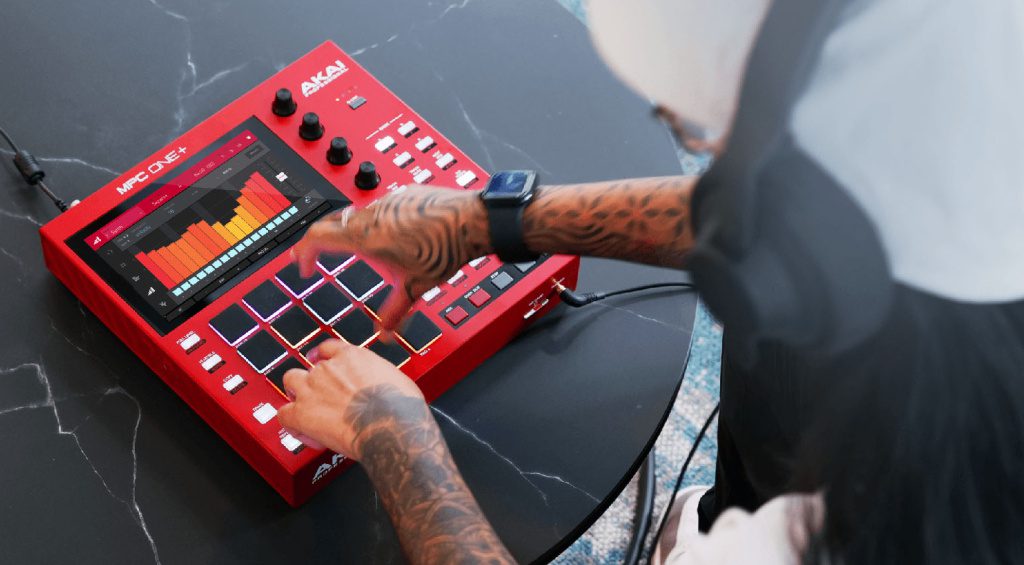
The most prominent drum samplers are the AKAI MPC and the E-MU SP-1200. In particular, the MPC 2000XL and MPC 3000 made significant contributions to the distinctive hip-hop style of the 1990s. The same goes for the renowned SP-1200, which, like the Akai S950, produces a “crunchy” 12-bit sound. Compared to today’s groove boxes and samplers, these devices are basic, but that’s what makes them special.
The samplers mentioned above are now only available secondhand. The MPC 3000 and SP-1200 are extremely expensive and difficult to obtain. Those who don’t want to spend $4,000 or more and prefer a modern workflow can opt for today’s alternatives. The SP-1200 is available in an expensive new edition, and the modern ISLA Instruments S2400 replica is currently difficult to obtain and expensive. A low-cost plug-in alternative is the RX1200 plugin*.
However, we would like to suggest something else because the AKAI MPC legacy continues with new models. The MPC Live III is brand new, but the MPC Key 37 has everything you need for boom bap beats and comes with a built-in 37-key keyboard.
Like the original MPCs, this standalone device has 16 touch-sensitive pads with RGB backlighting. Unlike the originals, everything here is new and up to date. These features include a 7-inch color multi-touch display, four Q-Link encoders, Wi-Fi and Bluetooth support, eight CV/Gate outputs for connecting to a modular synthesizer, 32 GB of internal memory, an SD card slot, two USB ports, a variety of effects, and a large selection of pre-installed sounds.
The MPC DAW allows you to perform modern MIDI and audio recording, enabling you to create complete tracks with the MPC Key 37. If you’re looking for similar features but don’t need a keyboard, the MPC One+*, shown in the above image, is a good alternative.
You can purchase the AKAI MPC Key 37 here at Thomann*. Here’s a tip: With the free MPC Beats DAW, you can familiarize yourself with the workflow of modern MPCs. You might like it!

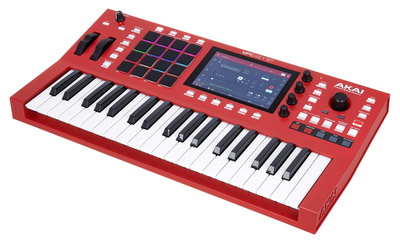

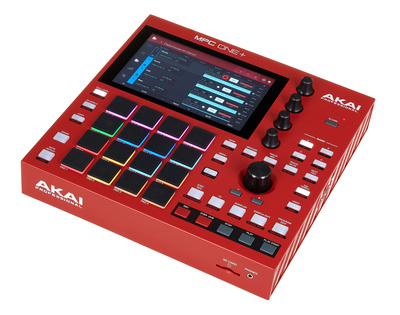
Plugin(s) for the Boom Bap Beats Sound
Okay, we’re cheating again because we’re presenting several plugins. They all have one thing in common: they’re used to edit samples, beats, or the entire mix. For an official Boom Bap Beat like those from the Golden Era, the sound needs a little “crunch” and timbre.
It’s about a little bit of dirt or a 12-bit character. The converters of some earlier samplers did not have the high resolution that is standard today. The sampling time was also limited to just a few seconds. Therefore, producers used tricks and played the records at 45 RPM instead of 33 RPM when sampling. The sampler then transposed the recording down, i.e., played it back more slowly. This, combined with the slightly lower resolution, resulted in a unique “grainy” sound.
You can replicate this trick in your DAW today, or use plugins specially developed to give individual tracks, samples, or the mix a vintage patina.
One of the best tools in this regard – and no longer an insider tip – is Decimort 2 from D16 Group. It’s a bitcrusher that emulates the behavior of different converters, preamps, and filters from vintage samplers and other digital equipment.
Decimort 2 offers a wide variety of presets based on famous samplers. However, you can also adjust the sound to your liking using the many available parameters. We highly recommend this plugin for achieving an authentic boom bap sound! You can purchase it here at Thomann*.

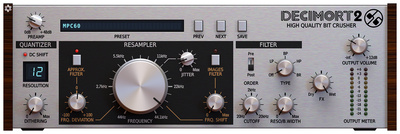
Now, let’s look at a few more plugins that are additions rather than alternatives. First is the free iZotope Vinyl, which adds vinyl crackles to your tracks.
AIR Music Technology Fly Tape II (at Thomann*) runs in the DAW and on the standalone MPCs mentioned above, providing a characterful tape sound. XLN Audio RC-20 Retro Color (at Thomann*) is expensive, but it’s great for all kinds of sound colorations, from vinyl to tape machines to VHS recorders. Also, most DAWs offer tools for bit reduction and similar effects, though they’re not as comprehensive as specialized plugins.

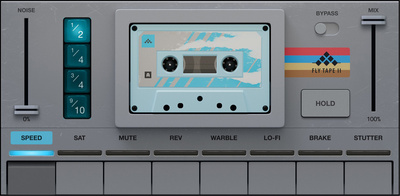

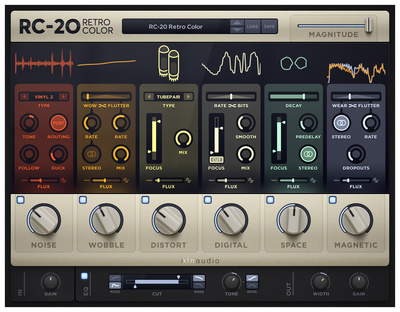
Boom Bap Beats: Samples and Loops
Now, let’s move on to another essential. At this point, we should mention turntables because the boom bap beats of the 1990s consist of samples from old records and scratch interludes.
However, sampling is legally questionable today, especially if you want to upload your beats to streaming services. It can be expensive, so we don’t recommend it. If you’re just making beats for fun and sharing them with friends, though, there’s nothing wrong with that. In fact, a sampling session with old vinyl records can be very inspiring.
On the other hand, beatmaking with royalty-free samples is pretty “safe” and also very creative. This is especially true if you break loops down into individual parts and reassemble them, as Mark Ronson demonstrates in the video above. Remember that many classics consist of the same breaks repeated over and over again. Today’s sample libraries easily capture this sound.
There are tons of samples and loops available. A good place to start is Loopmasters*, where it’s worth browsing the other genres to find sounds “off the beaten track.” While this may not be comparable to digging for samples on old records, it saves you a lot of work. With creative flipping of the samples, you’ll definitely get great results.
Here at Thomann*, you’ll find sound libraries specially tailored to the new MPC models. These include Boom Bap Essentials*, which provides sounds perfect for beats. Another interesting release is the recently published Vinyl Breaks from Mars collection. The breaks and libraries from Pat Van Dyke are also worth checking out.

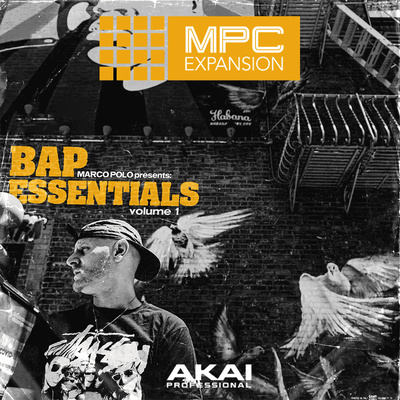

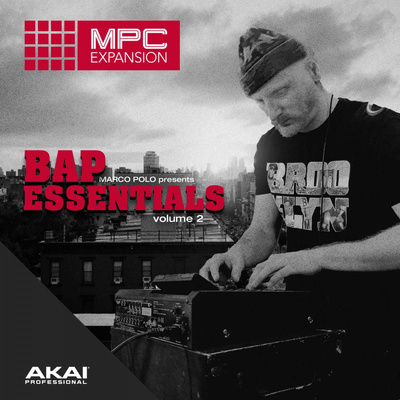
Conclusion: This Trio is the Perfect match
You don’t need much to create boom bap beats in the style of the 1990s. While you can theoretically achieve this sound entirely in your DAW, a sampler like the MPC – represented here by the MPC Key 32 or the MPC One+ without a keyboard – provides an authentic feel. To give your sound that classic vintage character, a plugin like D16 Group’s Decimort 2 is ideal. If you want to break down breaks without infringing on copyrights, use royalty-free sample packs. Together, these elements are the perfect match for hip-hop beats in the style of the Golden Era.
More Information
*Note: This article contains affiliate links that help finance our site. Rest assured, the price for you always remains the same! If you purchase something through these links, we receive a small commission. Thank you for your support!

 3,0 / 5,0 |
3,0 / 5,0 | 